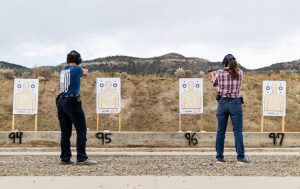Presidential Protesters Don’t Understand America
David Barton
The Inauguration of Donald Trump was remarkable in many ways, not the least of which was that six different individuals offered prayers, with four of those prayers ending in Jesus’ name and the other two openly quoting from the Bible. Clearly absent was the typical government-mandated politically-correct prayer. Ministers were once again allowed to pray according to the dictates of their own conscience, as originally intended by the US Constitution.
Another unique feature of his Inauguration was the large number of protesters present. Most were Millennials, and while some focused on single subjects (e.g., immigration, global warming, Obamacare) others were still protesting the general election results. Among the latter group, a common protest sign was, “Trump is not my president.” But that statement says more about our education system than it does about those who held the signs. It affirms the failure of American education in four areas: American history, government, Constitution, and truth.
First, the sign was intended to express their outrage over the fact that Hillary won the popular vote by 2.9 million votes (out of 128.8 million cast) but lost the presidency—an outcome they believed was unprecedented in the history of American elections. Only it wasn’t. The identical thing has happened in several other presidential elections. Shame on schools for not teaching basic American history and why such outcomes occur.
Second, the message on the sign was rooted in the protests’ mistaken belief that America is a democracy. But we are not. Those who formed our government hated democracies and wisely protected us from them. For example, James Madison affirmed that “democracies have ever been spectacles of turbulence and contention [and] incompatible with personal security or the rights of property.” Founder Fisher Ames warned, “A democracy is a volcano which conceals the fiery materials of its own destruction,” and John Adams lamented that democracy “never lasts long….There never was a democracy yet that did not commit suicide.” For thousands of years, democracies have consistently proved to be a source of lurking disaster—an unpredictable form of government where passions and selfishness are allowed to prevail over reason and deliberation. America was therefore established as a constitutional republic—what John Adams described as “a government of laws and not of men.” Shame on schools for not teaching basic American government.
Third, the “Trump is not my president” sign affirmed their unawareness of how presidents are to be elected according to the Constitution—an election process that mirrors our federal bicameral system. For example, Wyoming has half-a-million citizens, but California has 39 million. So in the US House, Wyoming gets only one Congressman while California gets fifty-three, and California will beat Wyoming on every vote in the House. The popular vote of the House will always prevail in that chamber. But in the Senate, California gets only two Senators—the same as Wyoming; the representation is solely by state, and every state has equal voting strength with all others. This is a prominent feature in our federal system. A bill is not passed merely by the House, which reflects the popular vote; it also must be passed in the Senate, which reflects the vote by states.
The protesters believe that only the national popular vote matters (which Hillary won—barely). But even though she garnered the votes of most of the largest cities in America, she did not win the majority of the states, cities, or counties. In fact, Trump won 30 of the 50 states, more than 80 percent of America’s 3,141 counties, and an equally lopsided percentage of its 35,000 cities. The protesters were unaware (as are most Americans) that the Constitution establishes an election system that balances diverse measurements. Shame on schools for not teaching the Constitution.
Finally, the declaration that “Trump is not my president” establishes personal opinion as the ultimate measure of right and wrong—that truth is whatever I believe or declare it to be. (Polling today shows that two of three Americans believe that there are no moral absolutes—that every individual is his own arbiter of what is right and wrong, or moral.) But the problem with this is that there are absolutes. Jump off the Empire State Building and see what happens. On the way down you may personally object to what is happening, or be offended by it, or even vehemently disagree with it, but none of that will change the results. There is no alternate reality. None. Shame on schools for teaching students to elevate personal opinion above absolute facts.
It’s time that Americans demand that their schools once again teach American history (so students know that the popular vote winner does not always win the presidential election), American government (so they know we are a republic and not a democracy), the Constitution (so they understand our bicameral federal and election system), and absolute truth (that personal opinion must submit to truth and reality). If we don’t make these changes, we will not want to imagine, much less experience, the horrifying results from Abraham Lincoln’s warning that “The philosophy of the schoolroom in one generation will be the philosophy of government in the next.” God help America if citizens don’t act to change our schools.
Wallbuilders.com













